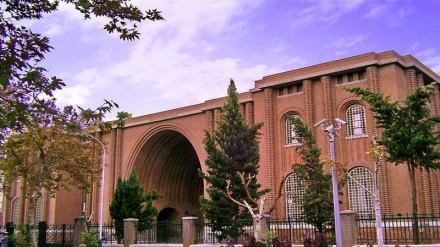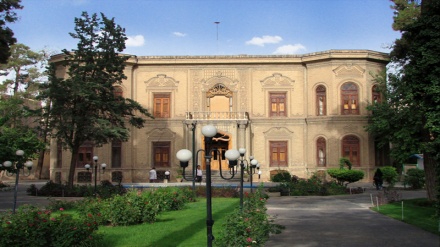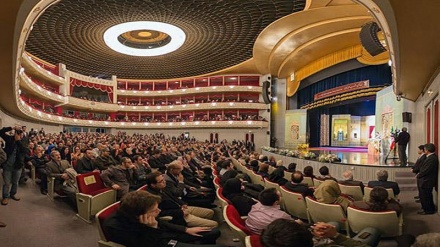Iran Your Attractive Destination (210)
Today, we become familiar with the tourist attraction sties of the city of Damavand. Do stay with us.
As a reminder, the city of Damavand was introduced, last week. It was also mentioned that based on archeological findings, humans have lived in this region as of 14,000 years ago, with some historians naming Damavand as one of the first cities of Iran. The historical monuments and architectural feats of the city of Damavand portray the age-old history of this region.
There are 37 Imamzadeh Holy Shrines, 27 castles, 23 historical houses, 21 sites of pilgrimage, 18 historical public bathrooms, 15 historical sites, 8 historical bridges, 6 natural tourist attractions, 3 ancient mosque, and 3 historical guest houses in this city, partly depicting the ancient history of Damavand.
Given that this city has accommodated the highest number of provincial historical monuments and natural tourist attractions, after Tehran, today we will become familiar with some of these monuments and scenic natural attractions.
Damavand’s Jam’eh Mosque is one of the most important historical monuments of this city, which is located in one of the old neighborhoods at this city’s downtown. Some believe that this mosque has been constructed in the year 812 AH. However, others believe that this mosque has been renovated on the said date. This group of experts opines that the mosque was in fact built in the year 500 AH. The mosque maintains a circular and simple minaret which has been placed on a square-shaped brick-made base. The remains of an ancient inscription in Kofi language, in addition to a number of decorations are evident on this minaret. This minaret is a reminder of the 5th Century AH architectural style. The most ancient part of this mosque is its small roofed section, which is in the mosque’s basement. The current building of the mosque maintains two roofed sections with a relatively large gateway, decorated with colorful tiles. Given that throughout the course of history this mosque has been partly destructed on a number of occasions, it has been renovated and repaired several times. Two inscriptions have been installed in this mosque; one of which is the order of the Safavid King, Shah Abbas the First, on the reduction of taxes levied on the people of Damavand, while the second inscription states the date of spread of plague in the year 1247 AH. It is said that in the pre-Islamic era, there was a large Zoroastrian temple in the current location of the mosque, which was turned into a large mosque, in the advent of Islam.
Damavand’s Jam’eh Mosque has been registered among the national historical monuments.
“Shebli Tower” memorial building is another historical monument of the city of Damavand, whose construction dates back to 5th Century AH, concurrent with Saljuqid era. This tower is a cone-shaped building which is made of bricks and lime. Shebli is one of the famous mystics of 3rd Century AH, who was the ruler of Damavand for a while, during the rule of Abbasid Dynasty. In the waning years of his life, he was engaged in purification of his soul and was later laid to rest in the same location. This memorial building has been registered among Iran’s historical monuments.
Damavand is home to many Imamzadeh Holy Shrines and sites of pilgrimage, including Imamzadeh Abdullah Holy Shrine which is located in city center. Its construction dates back to Ilkhanid era. This Imamzadeh Holy Shrine has been made of stones and mortar, while its upper section has been decorated with highly beautiful brickworks. This memorial building maintained significant importance in the Safavid and Saljuqid eras; and a number of items which belong to those eras can be observed in this building, including a wooden chest that has been left behind from the Safavid era.
As previously mentioned, Damavand is a mountainous region, which is situated east of Tehran Province. Its average altitude from the sea level stands at 2147 meters. Several rivers run through Damavand, and therefore there are numerous walnut, apple, and sour cherry orchards and pretty flowers in this region. Given the appropriate climate of Damavand region, it has turned into a top destination for eco-tourists, environmentalists, and mountaineers, all year long. Rivers Tar, Damavand, and Laar are the most important rivers which run through this region. River Laar originates from snow-tipped mountains, which are 3,000 meters in height and are situated east and northeast of Tehran Province. This river branches into several smaller rivers on its path. There are vast meadows on the banks of this river. However, given the chilly weather conditions in this region, there are only a few oases in the river’s vicinity. Trout fish are in abundance in this river. One of the other tourist attractions in environs of this river is a waterfall, which maintains an especial beauty.
River Taar is a permanent river which is 13 kilometers in length. This river runs through Damavand region, at a one-kilometer distance from Taar Lake. River Damavand stretches 30 kilometers, and runs through Damavand region, heading for the southwest.
There are also numerous natural springs in Damavand region, such as Cheshmeh Ala’ah, which is situated at a four-kilometer distance of the city of Damavand. This spring’s water is packed and exported to international markets.
MR/ME


